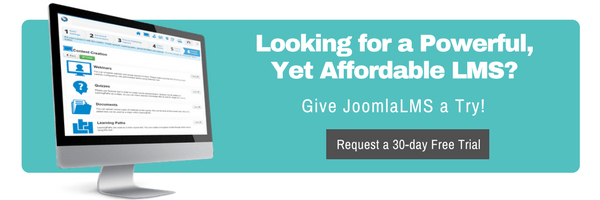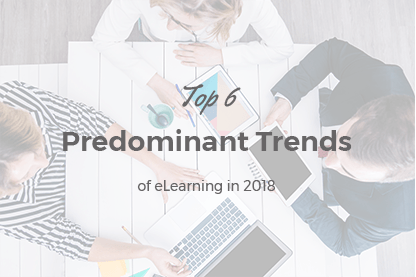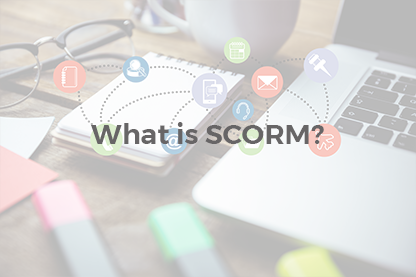Whether you are just thinking of starting your own eLearning business or working on making it successful and profitable, surely, time after time you have wondered why some eLearning projects succeed and others fail.
Of course, there is no single cause of the eLearning business “death” and there is a bunch of mistakes that can cost eLearning businesses millions starting from a “weak” idea to management mistakes along the business journey but we thought you might want to find out the most common ones.
Whether you are just thinking of starting your own eLearning business or working on making it successful and profitable, surely, time after time you have wondered why some eLearning projects succeed and others fail.
Of course, there is no single cause of the eLearning business “death” and there is a bunch of mistakes that can cost eLearning businesses millions starting from a “weak” idea to management mistakes along the business journey but we thought you might want to find out the most common ones.
We’ve already shared with you the eLearning business owners’ regrets and things they would do differently if they could start over. Today we decided to interview top eLearning and EdTech experts who work with a number of eLearning businesses every day and ask for their thoughts on the common mistakes people make when running an eLearning business.
We hope their lessons will help your eLearning business to keep afloat. Enjoy the reading!
ELearning Mistake #1
Lacking Focus
One of the big problems in eLearning projects is that there’s too much focus on the transmission of content/information via courses to people and not enough focus on using eLearning to improve the performance of people. Often courses are used as the default eLearning solution and most times they are nothing more than information dumps that may look pretty but overload the cognitive processing ability of the people who are forced to take them. As Cathy Moore says, we need to focus on what people need to do and, rather than just knowing information, that they can use the information.
The move away from just creating content driven eLearning - and correcting the mistake of simply being an order taker in the process - is to ask more questions at the beginning of a project to really identify where the performance gaps are. This may also involve spending time with the people who’ll be using the eLearning to better understand the context in which they work. This will help us to create a better solution, one that is useful and relevant and not ineffective and frustrating. Remember, our goal is to support the people doing the actual work in our organisations so we need to design our solutions to improve their performance and not simply transmit information.
 Matt Guyan, an experienced learning professional, classroom facilitator, workplace assessor and instructional design specialist
Matt Guyan, an experienced learning professional, classroom facilitator, workplace assessor and instructional design specialist
ELearning Mistake #2
Ignoring context and/or competition
When thinking about the strategies, challenges, and mistakes that an eLearning business might come across, the biggest thing I see is that companies are not familiar with context and/or competition.
Writing for the EdTech Roundup, I review around 60-80 EdTech apps and platforms every year. It is always surprising to me how many of those companies are either not familiar with the K-12 space, or have spent little to no time investigating other resources that offer similar solutions to what they're providing. Many times, a company is surprised when I ask, "So how are you different than Company X?" only to find that the service they're trying to provide already exists.
Based on this, my two recommendations would be:
- If you're planning on entering the K-12 space, make certain you are speaking and working with students, teachers, and administrators, and that you are familiar with the enormous range of K-12 contexts.
- Spend time researching what solutions already exist so that your product is filling a need that is not already being addressed.
 Mike Karlin is the founder and editor of the EdTech Roundup, a blog which serves to help teachers and schools find technology resources to meet their needs.
Mike Karlin is the founder and editor of the EdTech Roundup, a blog which serves to help teachers and schools find technology resources to meet their needs.
ELearning Mistake #3
Poor Planning
To setup an effective eLearning environment, you must have proper planning. You should always think like your learners and be prepared for:
- Any question that comes up that you might not have thought about and
- A simple solution on how you can address those questions when they come up.
An effective eLearning solution is one that attacks concepts from all sides and for all types of learners.
ELearning Mistake #4
Lacking Preparation
To many the term preparation means "to prepare" or, in other words, something you do ahead of the actual project launch, for this example the term preparation means... do you know what you will do when something comes up within the course of the project that is radically different than the concept you originally had in your head... And when that does come up, how will you deal with it and adjust accordingly.
Without the proper ability to plan for things you are thinking about and those things that you cant' even imagine along with the ability to create a learning solution that has the ability to quickly adjust on the fly your eLearning project has the dramatic potential to be a success or a complete disaster.
 Jeffrey Bradbury, a respected educational consultant, a creator of TeacherCast.net and TeacherCast University, a speaker and a broadcaster.
Jeffrey Bradbury, a respected educational consultant, a creator of TeacherCast.net and TeacherCast University, a speaker and a broadcaster.
ELearning Mistake #5
Assuming ELearning is One-Size Fits All
We’re fans of Cathy Moore here at Logicearth. Cathy pioneered the ‘save the world from boring eLearning’ approach. Put simply, if it is not going to improve your job performance, consider whether a full-blown eLearning project is necessary. With the move away from a one-size fits all eLearning to more agile ‘consumer-web type’ digital learning experiences; we have many more options at our disposal. If you choose the wrong design and delivery mode to get your message across you’ll waste people’s precious time and you’ll also turn them off for future learning interventions. Learn the difference between just in time learning, deep dive learning, awareness raising and performance support. Put yourself into the shoes of your target audience – what is the least you can do to help them?
Working in a previous role, I was an instructional designer on a nurses training programme for Drug Administration. We created a 2-hour eLearning programme on the important concepts to be aware of, had demonstration videos of drug administration skills and we also included scenarios on the most difficult parts of the drug administration process. The programme looked great – it was modern, broken into short bite-sized topics and it went down well with our project stakeholders.
We surveyed nurses after the programme and we asked questions about what content had the most impact. More than 90% of the nurses cited two posters summarising the common drug administration errors made. These posters were placed in the nurses break area and were often consulted before nurses did their drug round.
What did we learn from this? That sometimes the content you think works best does not! So, don’t assume - analyse and talk to your target audience. Consider providing the same type of content in different formats and beware of learning being a continuous, evolving need, rather than a one-off event.
ELearning Mistake #6
Poor User Experience (UX)
Most eLearning designers get the need to have a good learning experience for their users. They work hard with the client stakeholders and subject matter experts to focus on addressing the business need and having clearly defined learning outcomes. But what if, despite writing great content, having great digital design, your users aren’t completing your content? This could be down to a poor user experience.
In days gone by, eLearning designers only had to think about two or three variations in design. The one-size-fits-all eLearning, with the navigation on the left or right and continual clicking next was an accepted standard. This is not the case anymore. When we consider the digital content options available to us - from multi-device, mobile-ready content, to Apps, games, interactive video and augmented and virtual reality, the overall user experience is every bit as important as the content.
So what exactly is UX and is it different from usability? Yes! Both are essential for a good overall product. Just because something is easy to use, doesn’t mean it is a good user experience. User experience is about how someone feels when using your product and making sure user tasks are intuitive. You shouldn’t really have to write usability instructions - most people don’t read them. Think of your favourite make of a car. How do you feel getting into it, starting up, accelerating, changing gears etc. Great marketing and product promotion capitalises on great product design through great user experience. Sadly, the same excellence in UX hasn’t reached everyone in eLearning yet. Companies like Apple and Samsung have built their business growth on outstanding UX, so perhaps it is time for the eLearning community to follow suit.
 Fiona Quigley, Head of Learning Innovation at Logicearth, has worked in organisational learning and development since the mid-1990s in variety of training delivery, creative design and management roles.
Fiona Quigley, Head of Learning Innovation at Logicearth, has worked in organisational learning and development since the mid-1990s in variety of training delivery, creative design and management roles.
Do you know other mistakes that can cost an eLearning business millions? Please share in the comments section below.












